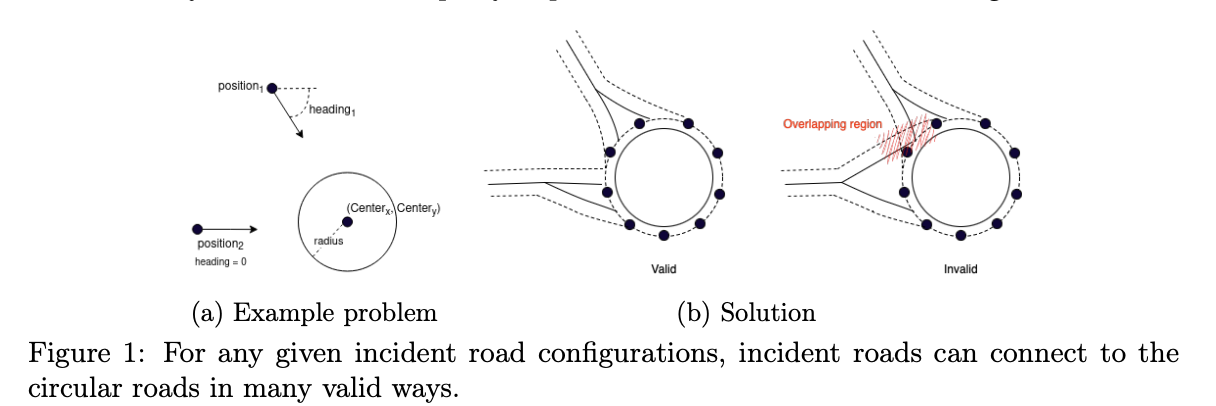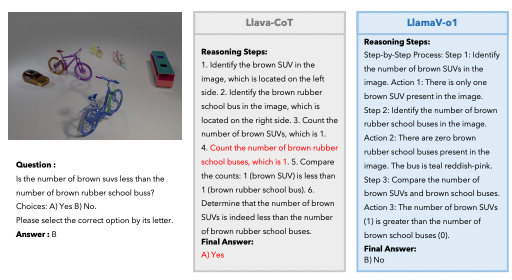There are many ways to design roundabouts. Can AI choose the best one?
Probabilistic generative modeling for procedural roundabout generation for developing countries

Roundabouts are circular intersections that can replace traditional four-way junctions. Vehicles travel around the center island to merge and diverge from different directions. When designed well, roundabouts can improve traffic flow and safety over other intersections. However, optimizing their layout requires extensive testing and validation - a costly endeavor, especially for developing countries.
In a new paper, researchers demonstrate how AI could automate roundabout design generation, enabling more efficient exploration of diverse, realistic options. What makes this problem suited for an AI solution, and how did they reach their conclusions? Let's find out.
Subscribe or follow me on Twitter for more content like this!
The Critical Role of Roundabouts
Roundabouts provide key benefits over regular intersections. Their circular design forces vehicles to slow down, reducing the likelihood of dangerous right-angle and head-on collisions. Studies show roundabouts can achieve a 37-75% reduction in overall collisions compared to intersections. Deaths and injuries are lowered by around 90% since crashes are less severe.
Roundabouts also keep traffic flowing smoothly. Unlike intersections, vehicles don't have to fully stop if no other cars are present. And the circular design eliminates dangerous left turns across oncoming traffic. This cuts congestion and reduces pollution from idling vehicles.
These safety and efficiency benefits make roundabouts an essential component of transportation infrastructure. They serve an important role within networks of roads, highways, pedestrian crossings and more.
The Challenges of Roundabout Design
But roundabouts have to be meticulously designed to realize their full potential. Small tweaks to the geometry and lanes can significantly impact safety and traffic flow. For example, inadequate acceleration/deceleration lanes or tight turning radii increase crash risks and bottlenecks. But over-designed roundabouts take up too much space and money.
Optimizing roundabout layout requires modeling many scenarios and constraints. Road curvature, lane count, pedestrian crossings, size, and connections must balance safety, traffic throughput, cost, and aesthetics. Slight changes can affect all of these factors, as roundabouts form interconnected systems.
Manually testing alternatives is cumbersome and expensive. Developing countries especially lack the expertise and resources for extensive physical modeling and simulation. Procedural generation using AI could provide a more efficient solution.
Rule-Based Methods Fall Short
To date, roundabout generators rely on hand-coded rules and constraints. But this limits the diversity of designs explored, hindering robustness.
Researchers argue more sampling-based, "generate-and-test" approaches are needed. Their key insight is that the diversity of options itself should be rewarded, not just validity. Expanding the search space surface reveals a multitude of high-performing local optima. Greater diversity also improves resilience should constraints change in the future.
Exhaustively testing every potential roundabout is computationally infeasible. Generating detailed simulations to assess each design is prohibitively slow. Can AI enable efficient search across diverse, performant possibilities?
Generative Flow Networks for Automated Exploration
Enter Generative Flow Networks (GFlowNets) - the AI architecture proposed in this paper. GFlowNets can learn policies to efficiently sample from complex, high-dimensional search spaces. The key is focusing on high-reward areas, avoiding exhaustively enumerating all invalid candidates.
GFlowNets work by incrementally constructing roundabout designs step-by-step. The sequencing of these constructions is learned to maximize a reward tied to realism and lack of collisions. In this way, the model explores the space guided by quality, while capturing diverse modes and avoiding unproductive regions.
The team formulated roundabout generation as a Markov Decision Process to determine this sequential building. Actions connect incoming roads to different points along the central circular junction. The policy opts for actions that probabilistically maximize valid connections without overlaps.
Notably, the GFlowNets architecture also includes an approximation scheme. Rather than a time-intensive simulation, it first rewards configurations based on simpler intersection checks between road geometries. This allows much faster training to focus sampling on promising areas. The most highly rewarded designs can then be validated through full simulation.
GFlowNets Enable Efficient and Diverse Generation
The researchers tested GFlowNets on synthesizing roundabouts for simulated road scenarios of varying complexity. They also compared against rule-based algorithms and standard reinforcement learning techniques.
GFlowNets could successfully generate valid and diverse roundabouts for all road arrangements. As road connections increased, the model continued to produce varied options without compromising quality. The approximations also accelerated training by over 200x compared to simulation-based rewards.
Overall, GFlowNets exceeded other methods on combined diversity and realism metrics. This demonstrates the value of guided generative modeling for exploring expansive design spaces. By focusing on high-performing regions, near-optimal alternatives can be automatically discovered.
The Future of AI-Assisted Infrastructure Design
I thought this paper was mostly interesting because this research provides a promising proof-of-concept for automated roundabout generation. By incorporating road simulator engines, the system could be further enhanced to handle more constraints and accurate evaluation.
The sampling-based approach also enables continuous improvement - new constraints can be added over time to generate and assess more options. And the concepts could be generalized to designing other road structures.
Of course, thorough real-world testing is still required before deploying such tools. But by unlocking new efficiencies, AI design assistants could make high-quality transportation infrastructure more accessible worldwide. This study offers an exciting glimpse into that future.
Subscribe or follow me on Twitter for more content like this!




Comments ()